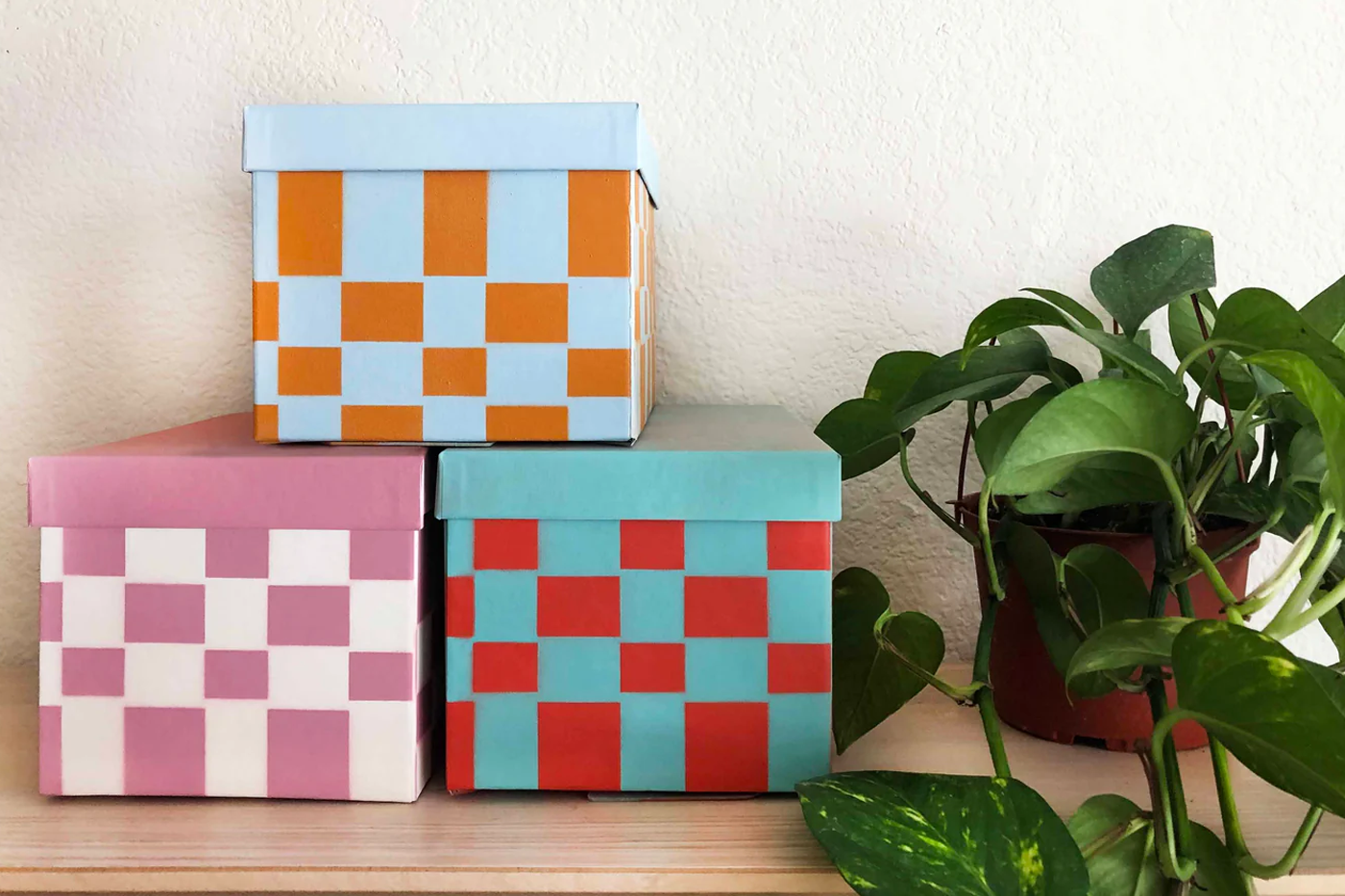Choosing Between Brush and Spray Techniques for Stencils
Spray paint vs. paint, the everlasting battle for which medium works best when using stencils. Let’s talk about it!
First off, everything is always up to your personal opinion. However, we’ll make sure that whatever decision you make is informed. We’re gonna try out a few different methods of painting:
- Spray paint
- Stencil brush
- Sponge brush
- Paint roller
- Paint brush
The Prep
For any stencil application, we recommend using some form of adhesive to make sure your stencil stays where you want it to. We like to use a spray adhesive and painter’s tape:
Press down on the stencil in order to make sure it is as close to your surface as possible. The closer it is to the surface, the less paint bleed you will have.

Method 1: Spray Paint
Let’s start out with arguably the most classic and most used stencil medium. It’s easy, even, and quick. Simply hold your spray can 10-15 inches away from your stencil and spray in short bursts. Short bursts are much more controllable than a long stream.
Here are the results:

As you can see, those lines are pretty crisp. There may be a little bit of paint bleed, but really not too much.

If you’re looking for something quick, easy, and flat, you might want to use spray paint! See us use spray paint to make some one-of-a-kind chess boards.
Method 2: Round Stencil Brush
Often round brushes are labeled “stencil brushes,” so let’s put them to the test to see if they might work for you.
When using paint, less is always more. When you dip the brush into the paint, make sure to wipe off any excess.
The best method for painting with these brushes is to dab. This will make sure the paint is as even as possible, but it will still have some texture.



As you can see, there’s a little more paint bleed with this one. It also takes quite a bit of time if you want it to be precise. However, it has a more organic texture, and that may work best for your project!
Method 3: Sponge Brush
Just like the round stencil brushes, we’re going to use the dabbing method. With this one, you really want to make sure the sponge isn’t holding a large amount of paint. You can press the sponge on a paper towel to squeeze out extra paint. The best strategy is to use a small amount of paint and press hard.
Here are the results:


There’s some good texture in here, but it’s also pretty even and doesn’t have a whole lot of paint bleed. It’s faster than the round brushes, but not as fast as spray paint.
Method 4: Paint Roller
Another classic! This method is quick and easy, but does require more prep because you need somewhere to roll out paint, and more cleanup. However, this is definitely the favorite method for covering large areas like walls.
Like the sponge brush, you want to use little bits of paint at a time and make sure excess paint is rolled out of the tool. Because you have so little paint on the roller, you’ll have to press hard to get an even coverage.

We’re big fans of using a paint roller. It doesn’t create very much paint bleed if done right, it’s fast, and creates a very even and clean finish. Watch us use it in this tutorial!

Method 5: Paintbrush
It’s easy, it’s straightforward, and quick! Using a large paint brush will give you a unique texture to your finished product.
The downside to a paintbrush is that you will likely have thicker pools of paint along the edges of the design. Check it out here:
If you’re looking for a raised texture, a large paintbrush could be for you!

At the office we use all of these methods for different projects. No matter what you are working on, there are multiple options for what paint and method you can use.
If you don’t see your desired materials on this page, feel free to shoot us an email or DM us on our social media for advice. Whatever you’re planning on making, we’ll make sure you get the help you need.




2 comments
Hi David! If it is a latex or plastic based paint like house paint, it can usually be peeled off. You can also soak it in warm water and the paint should begin to peel off. For spray paint, you shouldn’t need to remove the paint and you can just spray right on top of it. If you do need to remove it, you can use a scrubbing sponge with some warm water and dish soap. If that doesn’t work, you can add a tiny bit of paint thinner to try to remove it.
Author
what about paint buildup on the Milar stencil? Does it eventually come off when dry? or do you need to chemically remove it? what type of paint should be used to remove it if you do remove it?
David Black
Leave a comment
This site is protected by hCaptcha and the hCaptcha Privacy Policy and Terms of Service apply.